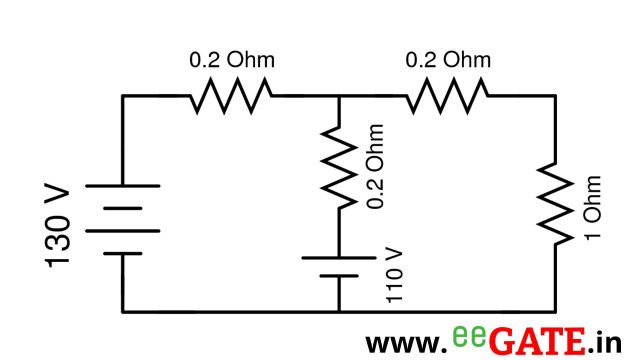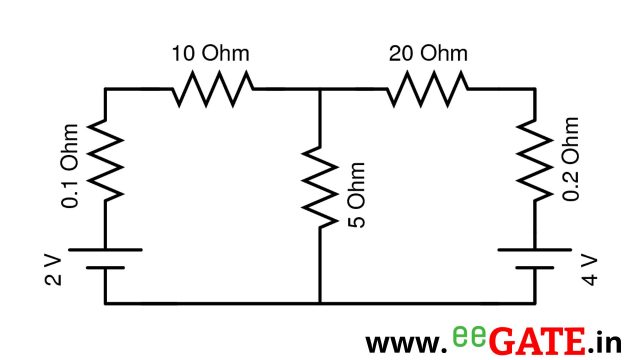HomeBasic Electrical Engineering
1) Find current flowing through 1 \Omega resistor.


Calculate V_{th}
130-0.2I-0.2I-110 = 0
-0.4I = -20
I = 50 A
-V_{th} + 110 +0.2I = 0
V_{th} = 120 V

Calculate R_{th}
0.2 || 0.2 = 0.1 \Omega
0.1 + 0.2 = 0.3 \Omega

R_{th} = 0.3 \Omega

Thevenin’s equivalent circuit.
I_{1\Omega} = \dfrac{V_{th}}{R_{th} + R_L} = \dfrac{120}{0.3+1} = 92.3076 A




















